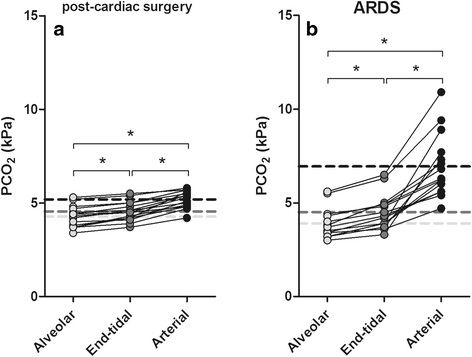

Within minutes of initiating mechanical ventilation he became increasingly somnolent, with tachycardia and hypertension. There was reasonable chest movement with the mechanical ventilation. The ventilator (840, Puritan Bennett, Pleasanton, California) was initially set to synchronized intermittent mandatory ventilation ( Table 1, setting 1). Correct endotracheal tube position was confirmed via capnography and auscultation. No hypnotics or muscle relaxant were used, as he was unconscious and rapidly deteriorating at that point.

Taking into consideration his severe COPD and the deterioration of his condition, we decided to re-intubate and mechanically ventilate him to decrease ventilation dead space and work of breathing. Bag-valve-mask ventilation gave temporary improvement. We also tried bronchodilator therapy as a last resort despite the fact that his preoperative pulmonary function test found no response to bronchodilators. Conservative treatment, including jaw thrust, insertion of a nasal airway, and changing the nasal cannula to a non-rebreather mask, failed to achieve any benefit. Minutes after arrival in the post-anesthesia care unit, he started to become hypoxic, tachypneic, and somnolent.

At the end of the 2-hour procedure, he met our extubation criteria and was extubated in the operating room, then transferred to the post-anesthesia care unit on supplemental oxygen, at 4 L/min via nasal cannula. A 76-year-old, 108-kg man with a history of severe COPD, responsive to bronchodilators, underwent (under general anesthesia) urgent cystoscopy and urinary bladder clot evacuation for substantial hematuria.


 0 kommentar(er)
0 kommentar(er)
